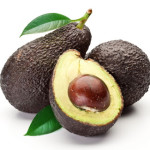 The love for the kitogenic diet, essentially fresh fruits and dairy products with good fat has buoyed the Kenya avocado market. However, statistics show that the average customer in Europe and North America looks for low-fat avocados. The average hass variety has between 190 and 330 calories. The ‘good fat’ content normally equals three quarters of all the calories. Consumers’ additional demand for healthier avocados has seen the rise of the low-fat variety as the new green gold. To know more about this new trend, here is a look at three export markets and what they currently prefer in their hass and fuerte imports:
The love for the kitogenic diet, essentially fresh fruits and dairy products with good fat has buoyed the Kenya avocado market. However, statistics show that the average customer in Europe and North America looks for low-fat avocados. The average hass variety has between 190 and 330 calories. The ‘good fat’ content normally equals three quarters of all the calories. Consumers’ additional demand for healthier avocados has seen the rise of the low-fat variety as the new green gold. To know more about this new trend, here is a look at three export markets and what they currently prefer in their hass and fuerte imports:
In the United States, avocados grow mainly in California but the country still imports from across the border in Mexico. The average consumer is now seeking the low fat varieties which are only available in medium-sized fruits from tropical locales. This is due to the stipulation by the Food and Drug Administration (FDA) that avocado fat should represent just 25 percent of all caloric count in the fruit. Currently, fat from the big-sized hass cultivars contributes 70% of all calories.
In China, the middle-class is still catching on in the heightened preference for avocados that has taken the world. Kenya is one of the advantageously positioned countries to supply the Chinese market because of an expatriate population working in the country and amiable trading relations. Currently, the middle-class consumer is demanding at least three export forms of the fruit. These include ready-to-eat/ripe, medium ripened for storage and low fat types. Mexico is the biggest source of the fruits to China as of 2018.
In the European union and the UK, customers have begun turning towards a new variety from Latin America that apparently has low fat. According to one company in Spain, the new Avocado Light variety contains 30 percent lower fat in comparison with typical varieties. It is the first country that has received shipments of the cultivar, but growers note they will introduce it to other countries.
Despite these new choices, the avocado remains a fruit of choice because of the same creamy content that consumers want to adjust. Each fruit comes with between 20 and 30 grams of fat. This produces much of the essential oil that has made Kenya farmers, for example, grow the fruit for both raw exports and value addition. In fact, 75% of the fat from the tropical fruit is good for combating high cholesterol as it is either polyunsaturated or monounsaturated.
How to Grow a Low-fat Avocado
A low-fat avocado dispenses with some of the saturated fats and contains more mono-unsaturated fats. To grow it is just a matter of climate choice. Because high-fat varieties grow in cold areas, it follows that the low-fat ones thrive in warm, high humidity climates of the tropics. This makes Kenya, Mexico, Brazil and Guatemala more qualified for their growth than the temperate climate of California.
Kenya family growers may use some of the insights for making their fruits more attractive in the international markets through tips from the new Avocado Light. According to growers in tropical Americas, the most nutritious avocados come from fertile soil under the sun with just the right organic farming requirements. To avoid the use of chemicals, farmers usually make use of certified seeds that have resistance against pests and diseases.
Indeed, whether high or low fat, Kenya avocados and their global equivalents remain superfood for those trying healthy ways or switching from vegetable oils. Consumers have become so used to the fruit as part of a daily diet that it has virtually replaced butter. For instance, during the low market season in 2017, New Zealand thieves stole avocados just to keep going. There are also findings that the new generation in the Land Down Under has no money left to buy homes because it spends it daily on the higher-priced mashed avocados instead of margarine. Thus, it is apparent that the fruit remains a major choice and Kenya family growers who convert to the low-fat varieties have much to gain.

